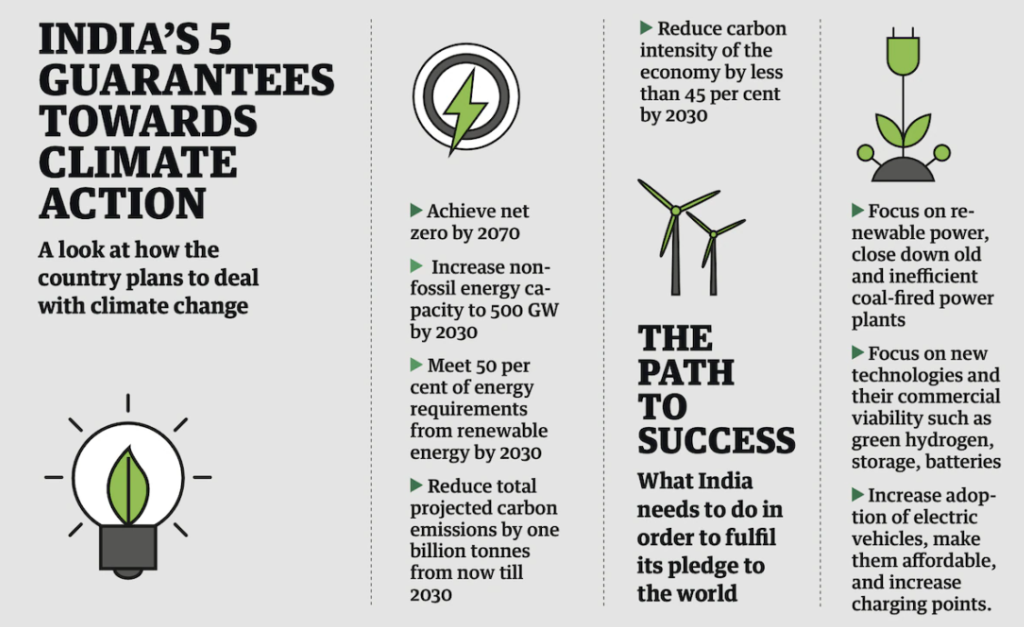
Introduction:
India, one of the world’s largest emitters of greenhouse gases (GHGs), is making significant progress towards its ambitious net-zero carbon emissions goal of 2046. In August 2022, Indian Oil Corporation announced plans to invest ‘2 lakh crore in phases, including the purchase of carbon credits, as part of this endeavour. In a similar vein, NTPC, an Indian energy sector behemoth, sought carbon trading experts to assist with its sustainability efforts. These developments reflect a growing interest in carbon credits and trading mechanisms as valuable tools for addressing the challenges of carbon footprint reduction. This article looks at how India’s own carbon trading market can help it achieve its green goals.
Rising Interest in Sustainability: As temperatures rise and GHG emissions rise, sustainability has become a top priority for regulators, investors, community stakeholders, and consumers. Energy, steel, cement, and transportation industries, in particular, are grappling with emission reduction targets. Many people lack the technical knowledge and resources needed to significantly reduce their carbon footprints. Carbon credits allow these businesses to meet their emission targets by offsetting emissions or purchasing credits generated by other entities. Despite criticism, carbon trading is critical in closing the sustainability gap in such industries.
With rising temperatures and rising GHG emissions, sustainability has become a top priority for regulators, investors, community stakeholders, and consumers. Industries, particularly those in the energy, steel, cement, and transportation sectors, are grappling with emission reduction targets. Many people lack the technical expertise and resources needed to significantly reduce their carbon footprints. Carbon credits allow these companies to meet their emission targets by either offsetting emissions or purchasing credits generated by other entities. Despite criticism, carbon trading is critical in bridging the sustainability gap for such industries.
Carbon Credit Market Development: The concept of carbon credits emerged in the 1990s, gaining international recognition through the Kyoto Protocol, which aimed to reduce global GHG emissions. The carbon credit market has grown significantly over time. According to MarketsandMarkets research, it is expected to be worth $414.8 billion in 2023 and $1.6 trillion by 2028. India has been an active participant in the global carbon market, accounting for 21% of all projects registered under the Clean Development Mechanism (CDM). Over $10 billion in foreign direct investment has been channelled through the CDM, making the country a significant contributor to voluntary carbon markets.
India’s Carbon Market Journey: To fulfill its commitment to reduce emissions intensity by 45% by 2030, India is taking proactive measures to establish an independent carbon market registry outside the UNFCCC CDM framework. By 2025, India plans to launch its own Emissions Trading System, leveraging the existing Perform, Achieve, and Trade (PAT) scheme. This domestic carbon market will dovetail with instruments like Renewable Energy Certificates (RECs). Additionally, India has identified 13 GHG mitigation activities and alternative materials that qualify for international trade of carbon credits under the Paris Agreement’s Article 6.2. These activities aim to facilitate technology transfer, attract international finance, and foster bilateral arrangements between governments.
Overcoming Challenges: Despite India’s active engagement in carbon markets, businesses and organizations face challenges in understanding and implementing carbon reduction initiatives to generate credits. The process of obtaining carbon credits is complex and time-consuming, involving rigorous verification and validation processes to meet international standards. Furthermore, clear understanding of project registration procedures under Article 6 and access to finance for non-ITMO (
